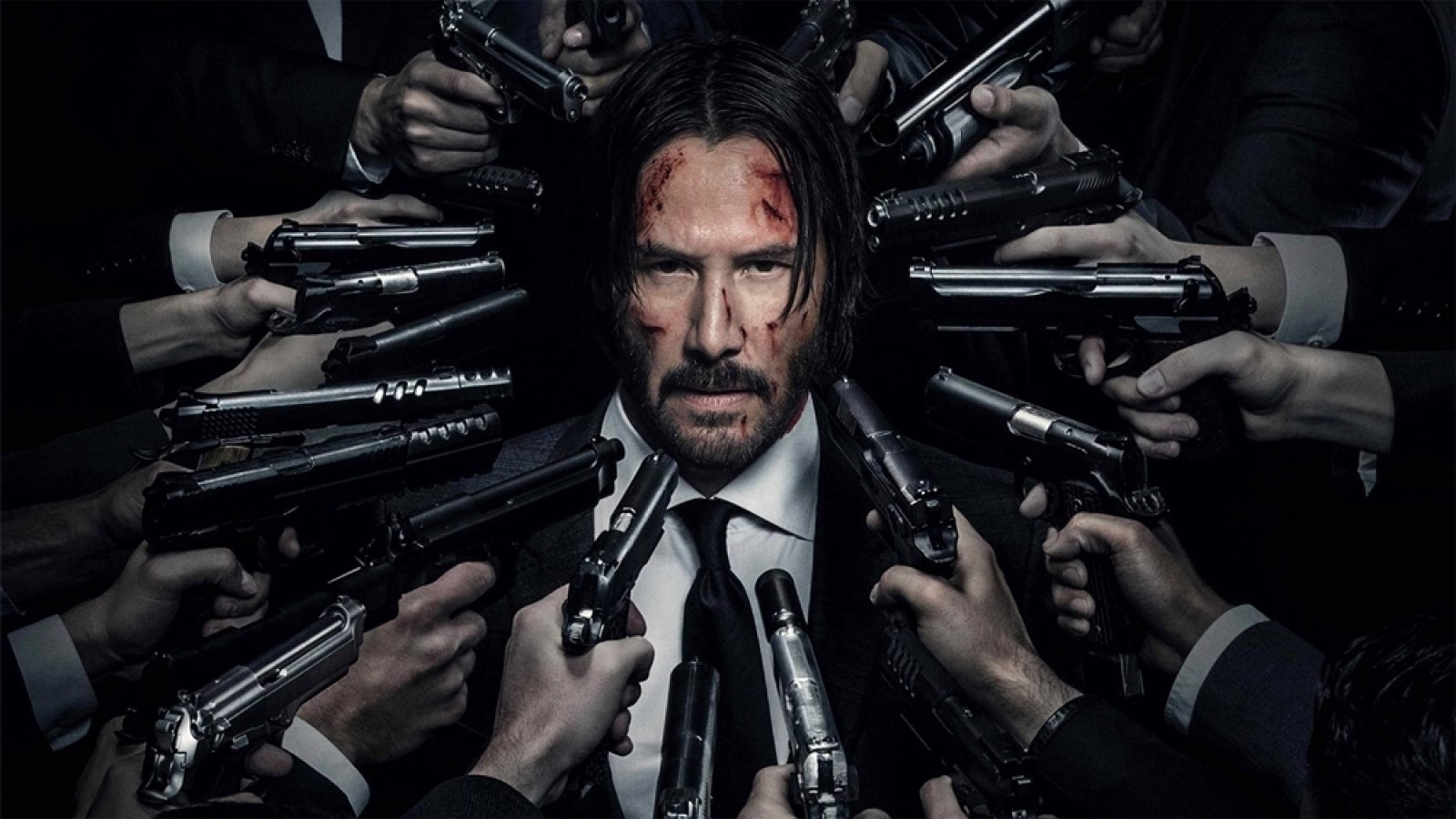The Matrix Resurrections (2021, Dir. Lana Wachowski):
“Free your mind”: such was the Matrix‘s clarion call in 1999. A canny fusion of dystopian cyberpunk, messianic mythmaking, kung fu, and guns (lots of guns), the Wachowski sisters’ breakthrough film solidified Keanu Reeves as a star, introduced “bullet time” to cinema vocabulary, and struck a chord with its core message: Break free from the simulacrum of regulated thinking. The Matrix was a rare big-budget blockbuster that insisted on a balance between practical action choreography and digital fakery, and its binary storytelling made matters crystal clear for audiences: either you were a Neo (Reeves) fighting to free the population from coercion and control, or you were an Agent Smith (Hugo Weaving) dedicated to keeping the masses down, assuming the guise of any person on the street.
The Matrix‘s call to arms was bracing but it did have its downside; witness Columbine and subsequent real-world atrocities in which teenage killers adopted the films’ outlook, seeing themselves as freedom fighters taking on the machine (i.e., ordinary folks). Steering away from these troubling undercurrents, the Wachowskis chose to disappear up the backside of their own mythologizing in the Matrix sequels. While the first Matrix was perfect as a brisk, self-contained entertainment, its sequels were lessons in diminishing returns, with The Matrix Reloaded (2003) and Revolutions (2003) bogging themselves down in video-game aesthetics (Neo vs. a hundred Agent Smiths), expanded lore that only served to confuse viewers (who can forget the Architect’s mind-bending exposition?), endless debates about free will, and interminable face-offs between programs, machines and humans.
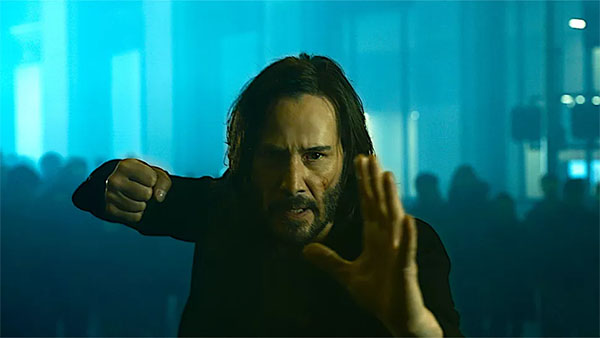
Since then, much has changed in the cinematic and cultural landscape, and what once was deemed edgy and futuristic now appears quaint in retrospect. Comic-book heroes in spandex have usurped moody protagonists dressed in sunglasses and black leather, and the Wachkowskis themselves have gone even more baroque (and bonkers) in recent years, with “spectacles” like Cloud Atlas and Jupiter Rising to their credit. But if franchises go out of style, they’re never really dead, as proven by dozens of recycled properties, and now it’s the Matrix’s turn in the barrel, with Lana Wachowski returning at the behest of Warner Brothers to restart (if not reinvigorate) the Matrix as a franchise.
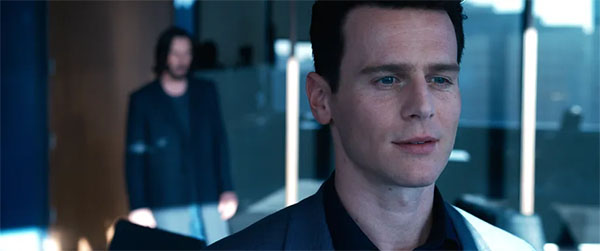
While Matrix Resurrections‘ primary purpose is regurgitating what came before (an affliction common to many long-running series), Wachowski isn’t shy about rubbing that fact in our faces. The opening teaser replicates the first Matrix, including the introduction of a new Morpheus (Yahya Abdul-Mateen II), but before long we learn it’s meant to be merely a simulation of the movie, or a simulation within a simulation, even. As we struggle to take that in, we’re introduced to genius game designer Thomas Anderson (Keanu Reeves) and baldly informed that the Matrix is indeed a franchise—in this case, a trilogy of video games sprung from Anderson’s mind (or do they subconsciously originate from his former life as Neo, savior of humanity?). Meta-commentary runs rampant: “Our beloved parent company, Warner Brothers, has decided to make a sequel to the trilogy,” Anderson is informed by his unctuous boss Smith (Jonathan Groff). “They made it clear they would kill our contract if we didn’t cooperate… I know you said the story was over for you, but that’s the thing about stories… they never really end do they? We’re still telling the same stories we’ve always told, just with different names and faces.” No need to wonder if Lana Wachowski endured a similar conversation with Warner Brothers honchos in real life.
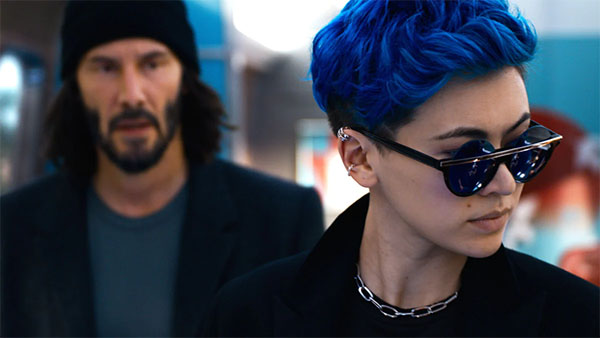
As a narrative fillip, the idea of Neo getting forcibly reintegrated with the Matrix, his previous experiences used as pablum to entertain and placate the masses, isn’t a bad one. It inspires a montage set to Jefferson Airplane’s “White Rabbit” in which the film briefly sparks to life: a “creative” (Christina Ricci) and her dithering colleagues brainstorm how to perpetuate the franchise (with keywords such as “originality” and “fresh” bandied about), even as Anderson flirts with a nervous breakdown, downing blue pills (natch) prescribed by his analyst (Neil Patrick Harris). Later on, Smith drives home the point: “Face reality. Movies are dead. Games are dead. Narrative is dead.” Cynical? Bitter? On the nose? Absolutely, but these rants are a fun glimpse into Wachowski’s conflicted mind, and for just a moment, we’re given a glimpse of an updated Matrix that might have something fresh to say about our current disconnected ways of living, and how we undermine ourselves by demanding heaping helpings of the same-old, same-old.
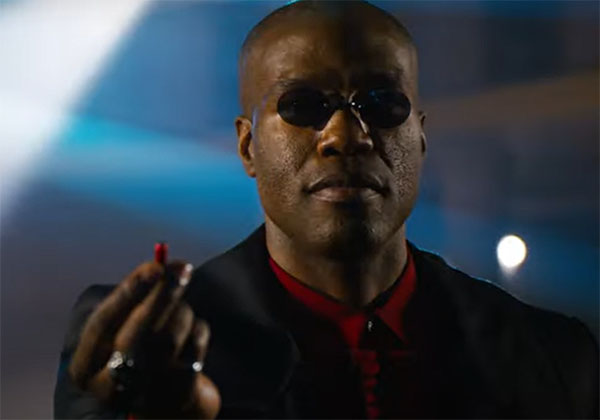
“Everything was simpler back then. People wanted to be free. It’s different now. Sometimes it feels like people gave up. Like the Matrix won.”
— Sheperd, Matrix Resurrections
Still, franchise expectations must be fulfilled, and soon Neo is led back down a familiar path to the truth, replete with red pills and cryptic pronouncements about control and freedom, while flashbacks to previous Matrix movies flash through the narrative like lightning strikes. Much as Wachowski might want to abandon the old mythology altogether, she’s still subservient to the pre-programmed template of what came before. Sluggish in pace and stodgy in editing, Resurrections isn’t a patch on the original Matrix, and can’t even match the overwrought action set-pieces of previous sequels. But if the movie is entirely unnecessary, it also has a weathered, rueful air that it wears well, much of it attributable to Reeves’ hangdog performance. Far from being a messiah or even a superhero this time out, his diminished powers and importance are of a piece with the story, which no longer values grand battles between mankind and machine. Instead, Wachowski is obsessed with simple human connection, as Neo struggles to reunite with former lover and comrade Trinity (Carrie-Anne Moss), now a domesticated housewife married to a guy named Chad (played by director Chad Stahelski of John Wick fame—this film could have used some of that series’ vigor). It turns out that their unrequited love is the juice that powers this particular iteration of the Matrix, and their consummation would spell the end of the simulacrum as we know it, an idea that’s sentimental, loopy and entirely in keeping with the Wachowskis’ world view. Not only does it do away with binaries (Neo and Trinity are only at their best when together), it’s a neat elaboration on Casablanca, which argues that the problems of two people amount to more than a hill of beans in this world; in Resurrection‘s case, they amount to the whole world.
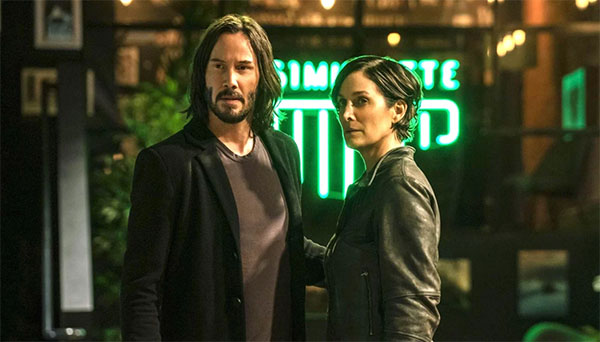
But before we get to true love, we have to struggle through several acts’ worth of talky explanations and backstory, as well as characters and situations that echo the good old days. As per usual, Neo gets a kung-fu training session with Morpheus. As expected, Neo gets the low-down on how Things Really Are from a wizened advisor (this time it’s Jada Pinkett Smith’s Niobe, who’s graduated from warrior to leader of humankind). The climax is stuffed with callbacks to the glory days: a motorcycle chase, swan dives off rooftops, helicopters showering spent cartridges into the air as they blast away at our heroes. Wachowski throws in some new concepts—cuddly machine mascots that aid humans, swarms of brainwashed people that attack our heroes like hoards from The Walking Dead—but for the most part, these recapitulations of the past come off as rote rather than exciting, and all the knowing winks the film throws at us about its own repetitiveness can’t alter that fact.
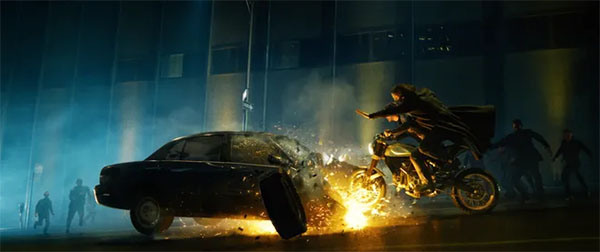
The air of déjà vu extends to the characters. The updated kick-ass version of Trinity is Bugs (Jessica Henwick); like a certain wascally wabbit she shares her name with, she’s bouncy and insouciant, if inconsequential. Groff’s Smith is yet another re-boot of Weaving’s rogue antagonist, and for good measure, he snarls out a few lines with a Weaving-like delivery. Lambert Wilson’s sneering, Monty Python-worthy Merovingian returns as a raving exile, bellowing on behalf of disillusioned Boomers and Gen-X’ers: “Art, films, books were all better! Originality mattered! You gave us Face-Zucker-suck and Cock-me-climatey-Wiki-piss-and-shit!” Leaving the biggest impression is Harris’s Analyst, who’s a smart-ass update on the Architect (Helmut Bakaitis) from The Matrix Reloaded. “The sheeple aren’t going anywhere. They like my world,” he smirks. “They don’t want freedom or empowerment. They want to be controlled. They crave the comfort of certainty.” He makes for the juiciest villain the franchise has had since Weaving’s first iteration of Smith in the original Matrix.

When it comes to choosing between sheeple and love, it’s clear where Wachowski’s sentiments lie—and it’s just as clear that she’s no longer interested or capable of energizing everything else associated with the universe she had a hand in creating. Much like Reeves labors to replicate his more fluid martial arts moves from two decades’ past, The Matrix Resurrections labors to recapture lightning in a bottle, while fully acknowledging the futility of such a task, forgoing any sense of revolution in story or filmmaking. Don’t call it a bug but a feature of the Matrix-like algorithm known as sequel-itis. ■


